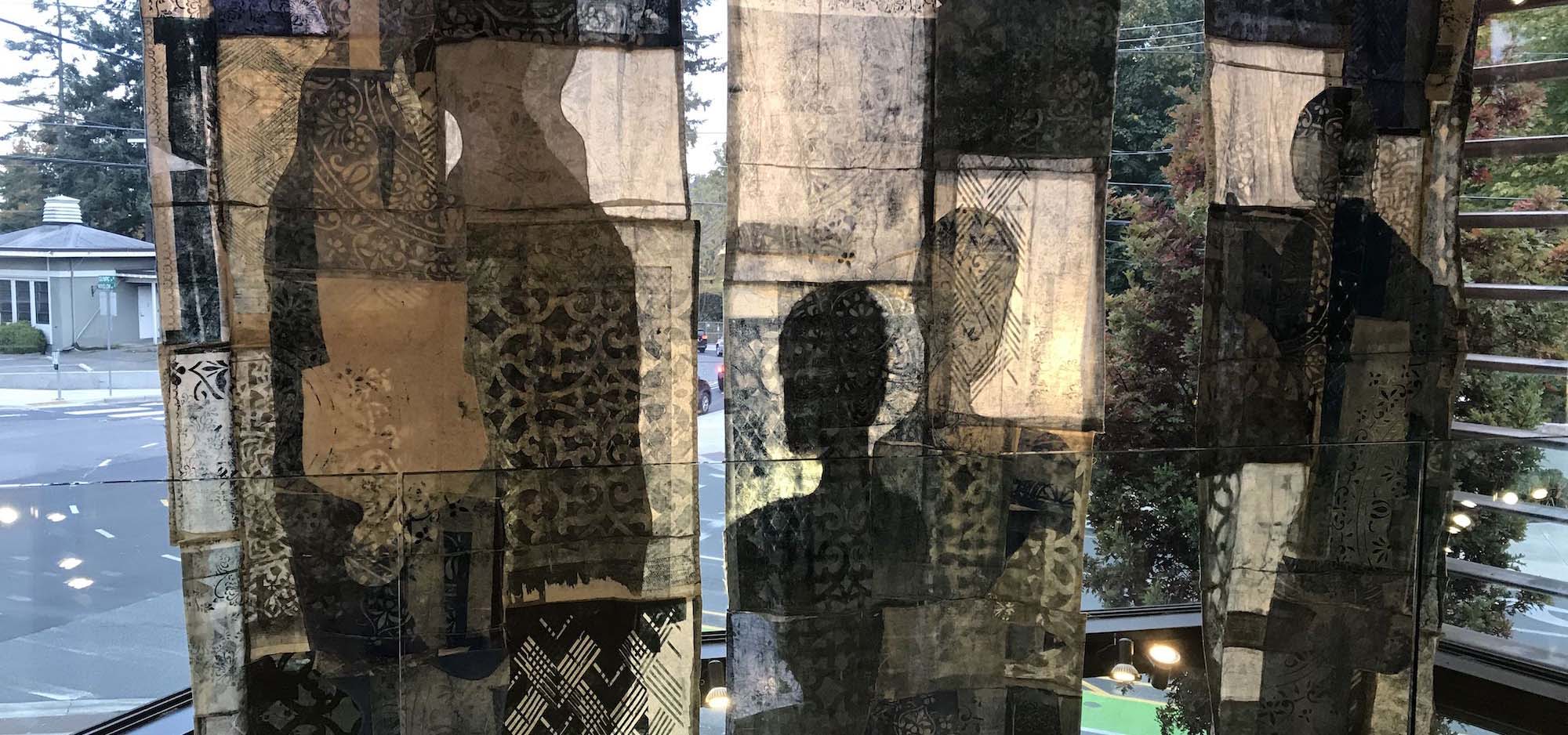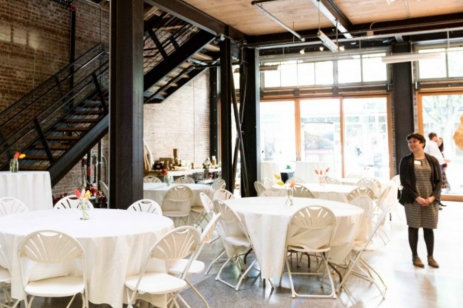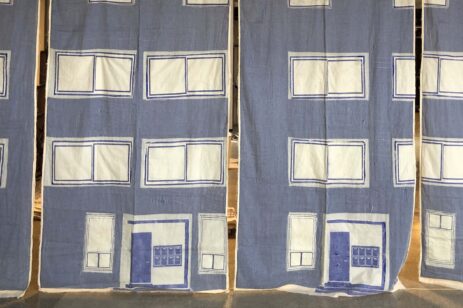Nigerian American print artist Jite Agbro considers our changing and nuanced social, psychological, and physical relationships to the built urban environment in her MadArt Studio exhibition P. L .U. A. (Proposed Land Use Action).
This site-specific work comprises architectural textile prints that compositionally create a fragmented rendering of the public housing complex where Agbro grew up with her family in Seattle’s Central District. Today the building still stands and remains home to its current residents; however, there are plans to demolish the existing structure to make way for a new mixed-use retail and low income residential housing. Though Agbro herself has not lived there since she was a teenager, news of the building’s impending demolition paired with her complex process of internally negotiating this loss became the driving impetus for this work.
P.L.U.A immerses viewers in a large, semi-transparent, graphic structure that utilizes the studio’s steel supports to span both vertically and horizontally in succession across the space. Influenced by the structural characteristics of the actual housing complex, the panels are an amalgam of cut graphic fabric designs textured with the artist’s hand-printed-and-sewn ornamentation. In the far corner of the studio, there is an obscured figural panel that acts as a pillar of P. L. U. A. Imbuing the work with life, this inclusion is a reminder of the human presence within urban architecture and the often unseen comings and goings of domestic life. Further, it provides a reflection of one’s emotional connection to place and how memory tethers itself to the physical world.
Much of Agbro’s work incorporates the human form to comment on cultural inheritance that is passed down through history and familial understanding. While this exhibition is decidedly less figurative, she expands on this concept to consider the structural influences—physical, institutional, ideological—that inform one’s lineal circumstance. Much like traversing through urban landscapes, the installation presents the viewer with several perspectives, a hopeful visual reminder that our life position is influenced, but not necessarily controlled, by our environmental circumstances.



